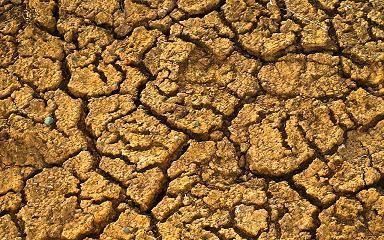California droughts caused by climate change say Stanford scientists
Severe drought in California is "very likely" to be linked to climate change, according to Stanford University research released on Monday

The unprecedented drought currently afflicting California is "very likely" to be linked to climate change, according to new research from scientists at Stanford University released on Monday.
Stanford climate scientist Noah Diffenbaugh has led the research team which has used a new combination of computer simulations and statistical techniques.
The paper says that a persistent region of high atmospheric pressure hovering over the Pacific Ocean that diverted storms away from California was much more likely to form in the presence of modern greenhouse gas (GHG) concentrations.
The research is a supplement to September’s issue of the Bulletin of the American Meteorological Society and is one of the most comprehensive studies to investigate the link between climate change and California's ongoing drought.
Diffenbaugh , an associate professor of environmental Earth system science at Stanford and a senior fellow at the Stanford Woods Institute for the Environmentm, said: "Our research finds that extreme atmospheric high pressure in this region – which is strongly linked to unusually low precipitation in California – is much more likely to occur today than prior to the human emission of greenhouse gases that began during the Industrial Revolution in the 1800s.”
The drought is crippling California and has been labelled by some as the worst in state history.
Combined with unusually warm temperatures and stagnant air conditions, the lack of precipitation has caused a dangerous increase in wildfires and air pollution.
Recent reports have estimated that the water shortage could result in direct and indirect agricultural losses of around US$2.2 billion and lead to the loss of more than 17,000 seasonal and part-time jobs in 2014 alone.
California Governor Jerry Brown has declared a drought emergency and the federal government has designated all 58 California counties as "natural disaster areas."
There is consensus among scientists that the cause of the drought is a "blocking ridge" over the northeastern Pacific that has prevented winter storms from reaching California during the 2013 and 2014 rainy seasons.
Blocking ridges are areas of high atmospheric pressure that disrupt normal wind patterns in the atmosphere.
The phenomenon has diverted the flow of high-speed air currents, known as the jet stream, to the north, causing Pacific storms to bypass not only California but also Oregon and Washington.
As a result, rain and snow that would normally fall on the West Coast has been re-routed to Alaska and even as far north as the Arctic Circle.
A key issue for scientists and decision-makers has been whether man-made climate change has influenced the conditions responsible for California's drought.
Diffenbaugh's team found that the combined persistence and intensity of the blocking ridge in 2013 was unrivalled by any event since records began in 1948.
The team collaborated with Bala Rajaratnam, an assistant professor of statistics and of environmental Earth system science and an affiliated faculty member of the Stanford Woods Institute for the Environment who applied advanced statistical techniques to a large suite of climate model simulations.
The interdisciplinary research team found that the extreme geopotential heights associated with the 2013 events were at least three times as likely to occur in the present climate as in the preindustrial climate.
They also found that such extreme values are consistently linked to low precipitation levels in California and the formation of atmospheric ridges over the northeastern Pacific.
Diffenbaugh said: "In using these advanced statistical techniques to combine climate observations with model simulations, we've been able to better understand the ongoing drought in California. This isn't a projection of 100 years in the future. This is an event that is more extreme than any in the observed record, and our research suggests that global warming is playing a role right now."
